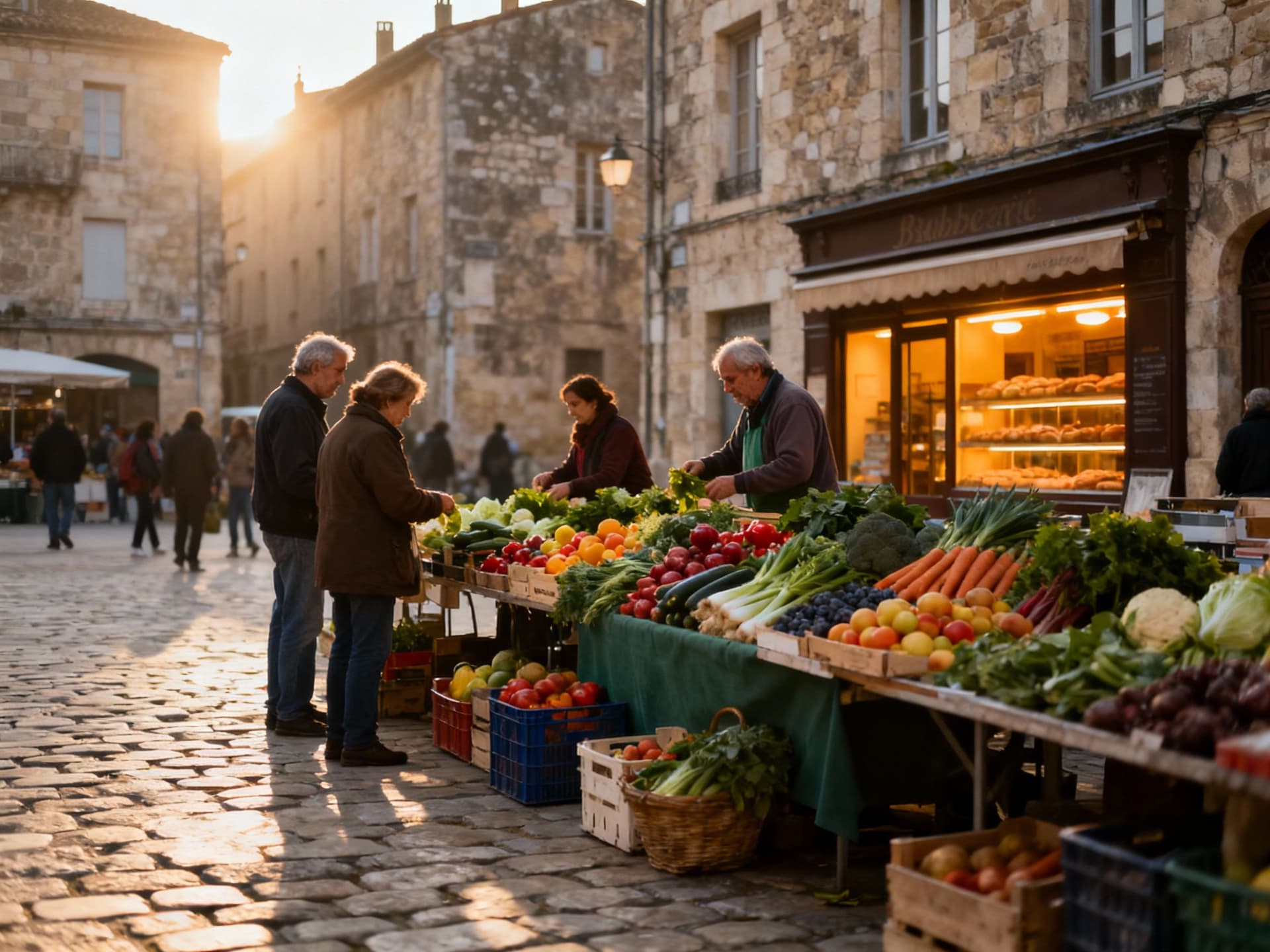When French Charm Meets Rules: Lifestyle, Tax & Energy Reality
France offers cinematic neighbourhood life but strict tax and energy rules — factor local taxes, non‑resident rules and energy upgrades into yield models before you buy.
Imagine sipping an espresso under plane trees on Rue des Martyrs, then stepping into a compact, sunlit apartment that cracks €10,000/m² in parts of Paris. France can feel cinematic — boulangeries at dawn, marché bustle on Saturday, and long, slow dinners — but beneath that charm are precise rules that shape ownership, taxes and returns. For international buyers the romantic image and the regulatory reality often run on different tracks. This piece links the lived life — neighbourhood rhythms, markets and seasonal swings — with the legal and tax mechanics you'll meet when you convert that dream into a property on the books.
Living the French life — how place and pace shape property choices

Life in France is local-by-design: every arrondissement, village and littoral town develops its own daily pulse. Paris mornings revolve around cafés and boulangeries; in Lyon you’ll find mid-week lunch culture centred on bouchons; on the Côte d’Azur afternoons are about beaches and short aperitifs before the restaurant evening. That local rhythm affects what works as an investment — tiny, well-located studios in central arrondissements rent steadily to professionals, while seaside villas rely on seasonal demand and maintenance cycles.
Neighbourhoods that matter — two quick spotlights
Paris 6th or 7th versus the 18th is not just a price gap — it’s tenant profile, turnover rates and regulatory scrutiny. In Paris central, units command high price-per-m² and attract long-term salaried tenants; in Lyon’s Presqu’île and Vieux Lyon you find a mix of professionals and students, changing rental yield dynamics. For a taste of coastal life, Nice’s Promenade and Cannes’ Croisette bring tourist footfall and short-let pressure that local rules increasingly constrain. Recent notary and market reporting shows central Paris stabilising at around €9–10k/m² while regional differences remain wide. cite
Food, markets and seasons — why January feels different to July
Markets are seasonal: fêtes and school holidays concentrate demand in summer along the coast, while corporate relocations push transactions in spring and autumn in cities. That seasonality influences both asking prices and negotiation margin — vendors in winter can be more motivated, while summer listings often target holiday buyers who pay premiums. The broader market has been moving since 2024–25 as mortgage rates softened and transactions picked up again, a dynamic to factor into timing. citeturn0news11
- Lifestyle highlights that influence property demand: - Morning market: Marché des Enfants Rouges (Paris) and Cours Saleya (Nice) drive neighbourhood desirability. - Café culture: Rue Montorgueil and Rue de la République anchor pedestrian rents. - Coastal seasonality: Nice, Cannes, Biarritz see summer demand spikes affecting short-let regulation. - Wine-country appeal: Saint-Émilion and Pauillac attract buyers but demanding upkeep. - Active-lifestyle hubs: Grenoble and Annecy near mountains support year‑round lettings.
Making the move: practical considerations that preserve lifestyle and returns

You can fall in love with a façade, but the yield math and regulatory detail determine whether it’s a good financial move. France combines local taxes, energy rules and landlord regulations that directly affect net yield. Two practical realities international buyers must underline: local taxes and non-resident income rules, and the energy classification obligations that now shape rental eligibility.
Tax basics for non-residents: rental income sourced in France is taxable in France and must be declared to French authorities. Non-resident taxpayers may face withholding or minimum rates (20% up to a threshold, higher above it) unless opting for the average rate method where advantageous. Local taxes — taxe foncière and the residence tax for second homes — remain payable by owners irrespective of residency. These mechanisms materially affect net yield calculations for buy-to-let strategies. cite
Energy performance is now an investment constraint: from January 1, 2025 France restricted renting properties with an energy class G without remedial works. That means older, uninsulated apartments often need refurbishment before they can legally be let — an upfront capital cost that reduces short-term yields but can preserve capital value. For buyers, the renovation cost and timeline must be part of acquisition models, not an afterthought. cite
- Steps to align lifestyle goals with regulatory reality: 1. Calculate net yield including taxe foncière, second-home residence tax (if applicable), and expected renovation for energy upgrades. 2. Check local short‑let rules — many coastal and city communes restrict tourist lets or require registration. 3. Verify tenant demand by neighbourhood: proximity to transport, schools, and markets matters more than postcard views. 4. Factor in estate agent and notary fees (typically 7–8% for existing property) and transfer duties in your cashflow model. 5. Model tax outcomes using your country’s double taxation treaty with France and French non-resident rules.
Insider knowledge: what expats wish they'd known (and how agencies help)
Expat buyers repeatedly report three surprises: the persistence of local administrative processes, the role of heritage and co-ownership rules in older buildings, and the speed at which energy and tax rules change. Living the French life means navigating syndic boards in Haussmannian buildings, seasonal neighbours on the Côte d’Azur, and a bureaucracy that rewards preparation. The right local agency is less about glossy listings and more about translating municipal rules, co‑propriété statutes and tax notices into clear financial impacts.
Cultural integration and daily realities
Language matters for everyday friction: utility setup, syndic communications and tax filings often use formal French. Making friends, joining marchés or local associations shortens the friction curve and often uncovers off‑market opportunities. Expats who learn basic administrative vocabulary — quittance, syndic, taxe foncière — save negotiation time and avoid costly misunderstandings.
Long-term lifestyle: costs, inheritance and property culture
France’s civil-law inheritance rules and the social expectations around property maintenance mean long-term ownership often involves family dynamics and succession planning. Second-home tax rules and local surcharges can vary by commune; check the municipal notices. For investors considering legacy or long-term letting, incorporate inheritance law advice and a 10–15 year maintenance reserve into your financial model. cite
- Practical insider tips: - Ask for the last three syndic minutes and maintenance budgets for co‑owned buildings. - Confirm energy class (DPE) and get contractor estimates before bid submission. - Include local tax estimates (taxe foncière, second‑home residence tax) in net yield spreadsheets. - Check local mairie rules on short lets — fines exist for unregistered tourist rentals. - Use a bilingual notary or solicitor experienced with non‑resident transactions.
Conclusion: France sells a lifestyle and enforces rules. If you want morning markets and a manageable commute, buy near the market square or station and model yields conservatively; if you want seaside summers, budget for off‑season maintenance and stricter rental rules. Recent market signals show transactional recovery and price stabilisation in 2025, but local legal and tax mechanics — from non‑resident withholding to energy-based rental bans — are the levers that convert charm into a durable investment. Start with neighbourhood visits, then build a regulatory-first cashflow model before offers. citeturn0news11
Dutch investment strategist who built a practice assisting 200+ Dutch clients find Spanish assets, with emphasis on cap rates and due diligence.


